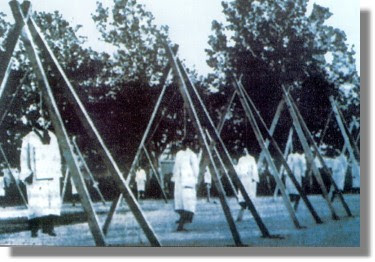Vaհe H Apelian
For a title of this blog, I chose Church of Armenia and not Armenian Church for the following reason. The rightful argument may be raised that the Armenian Apostolic, Catholic and Evangelical churches constitute the Armenian Church. But the Church of Armenia is how the founding church was also called. Catholicos Aram I, in his book titled “The Armenian Church” notes, per the transliteration he adopted for Հայաստանեաց եկեղեցի, the following: “Hayastaneac Ekeleci, the original name used for the Armenian Church, meaning either the church of the people living in Armenia, or simply the Church of Armenia.”
At one time, the church bell tower was very much part of the church building. Ringing of the church bell at momentous occasions was the tradition. Understandably it is not practiced at the present. But as a Kessabtsi I experienced the ringing of the church bell. For those who have heard the church bells ring, I imagine the ringing would resonate deep in their souls, as it did in mine when the bell of Keurkune’s church rang on Sunday mornings.
I spent the summers of a good part of my formative years in our ancestral village Keurkune, Kessab, whose Armenian Evangelical Church was built at the turn of the 20thcentury. Per the inscription on the front wall, the Armenian Evangelical Church of Keurkune laid its foundation onJanuary 8.1898, and completed the construction on July 2, 1899. The mason of the church was Archbishop of blessed memory Ardavast Terterian’s grandfather. Every Sunday, the smaller bell of th church was rung to invite the young to Sunday school but the larger church bell, in the bell tower, was rung to invite the adults to church.
The church bell was also rung at other solemn occasions. When the news of my brother Garo’s untimely death arrived there, our cousin Stepan Apelian rang the bell of the church to break the news. In my formative years there, the elders would speak about the ringing of the bells when the buses arrived to take the repatriating Kessabstis to Beirut from where they would be embarking on their journey to Armenia first by sea and then by land. As the buses started leaving the villages, the bells of the churches were rung. They spoke of that bitter sweet moment, the ringing of the church bells accentuated, for those who were staying behind. Families were being separated, the villages were being vacated leaving behind empty houses, unattended orchards and the village life was to go through a profound change.
The Church of Armenia’s bells were rung calling the people to fight for the survivor of whatever was left of historical Armenia. The Sardarabad Monument displays the church bells in three columns. Had the Church of Armenia’s bells not rung calling the people to fight, the Armenians might not have heeded to the battle cry let alone prevailed in those decisive battles we celebrate to this day. It is no wonder that the eminent poet Baruyr Sevag titled his superb work, “Un-silence-able Belfry” (Անլռելի Զանգակատուն)։
Armenia is experiencing existential threats at the present as well. But the bells of the Church of Armenia are silent. I am not only speaking figuratively but also in actuality to mark these momentous occasion especially on and since the disastrous recent defeat of Armenia.
The bells of the Church of Armenia have remained silent.
On July 4, 2023, the silence of the Church of Armenia dawned on me in ways that had not happened before. The PM of Armenia flew to Ankara to attend the celebration of Erdogan’s election. When I saw his picture in the enemy’s den, I could not bring myself to remain silent, and posted “May God help the Prime Minister of Armenia Nikol Pachinyan and give me him fortitude, courage in pain and in adversity, as he deals with powerful, arrogant, SOBs. Asdouatz hedt varchabed - Աստուած հետդ վարչապետ”.
The Church of Armenia was silent.
On June 2025, the PM of Armenia paid an official visit to Türkiye at the official invitation of the president Erdogan. I expected not only the bells of the Armenian Church ring, but also the church render prayer services for a safe trip and successful conclusion of that historic meeting,
The Church of Armenia was silent
The bells of the Church of Armenia remained silent at these historically momentous occasions. The Armenian Church did not offer special services for the head of ostensibly the first Christian state embarking on these journeys.
The question rose in mind. At what time the Armenian Church rings its bells? At what point the Armenian Church offers prayer services for the well-being of the head of its state engaged in attempting to attain the safety, the security and the longevity of the nascent republic?
You make your minds and make your guesses.









